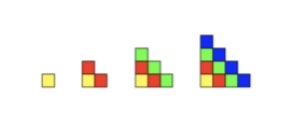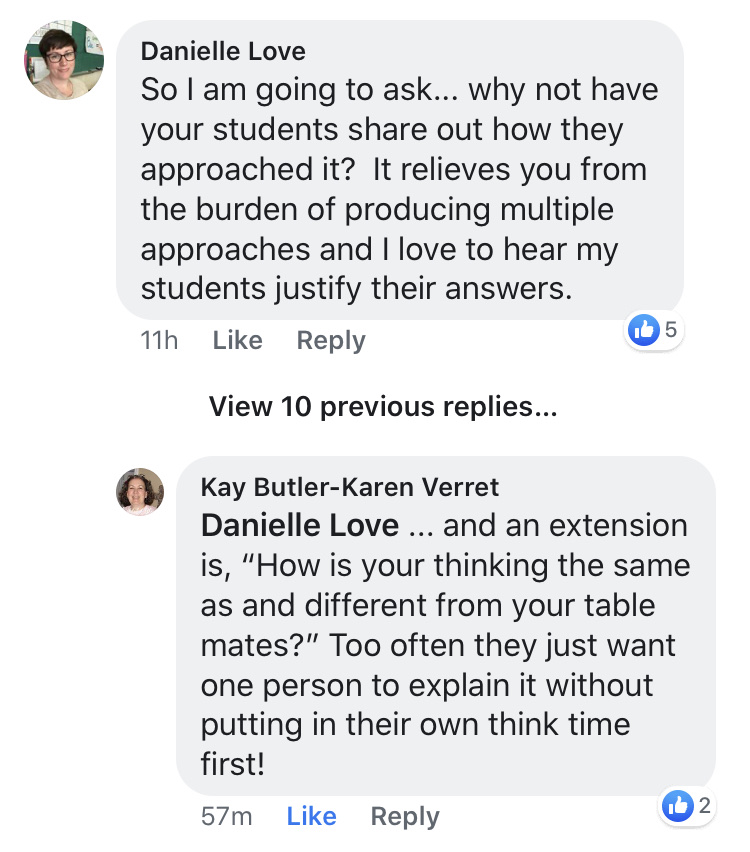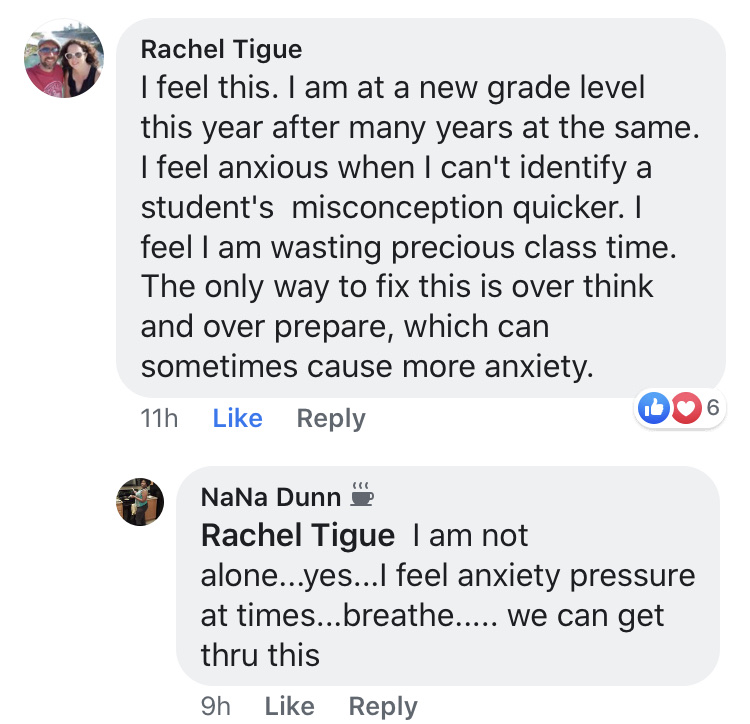Oh yeah! I used to dream about my lessons… over and over during the night. I’d wake exhausted. Here’s an example of what I do now…
When you realize the students can’t ‘see’ the thing you are teaching them…
My kiddos are learning to write quadratic equations. This requires them seeing patterns of growth. The first lesson in this series was to help them see the growth in a pattern of cubes. I used a YouCubed lesson that involved coloring each growth step. Just that. This exposed several issues. The lesson with numbers was the next day, and I was pleased by the intensity of their interest, but here’s why I think that happened: I had prepared them for what they were looking for.

Quotes taken from the original FB post…
Beth Hanna McManus writes “My 8th graders… totally missed the concept that the altitude to the base of the triangle goes through the vertex and hits the base at a 90 degree angle. I explained this in mathematical terms, in layman’s terms, using words like straight to the base, “shortest distance”, had them draw them on the white boards (checking and helping each drawing) multiple times, had them label triangles. When it came time for homework, no one knew what to do. I flipped out and spent the rest of the day in a dither wondering what is wrong with me that I can’t communicate with these kids…”
When I plan a learning experience, I look for the base skill/image/idea a child needs to be able to have to participate in a lesson. It may be a simple warmup – for the triangle problem above, after realizing they didn’t get it, I might have them draw the altitude, pointing out the way the angle looks, and how it starts in the vertex, in several different triangles. Just that. No math, just letting them learn to see what they are looking for.
Starla Adams writes, “Yes, yes, and yes….says the teacher who is out of strategies to teach long division after Friday. I actually thought I was going a little bit insane for an entire hour.”
Teaching long division is challenging. I’ve worked with 9th graders who do not understand what dividing does. If they don’t have an understanding of partitioning and regrouping, long division is just a nonsensical set of steps that they must follow – and memorize. A warmup using manipulatives (coins buttons beads) to set the stage for dividing into groups would help them understand what they are looking for. Then long division can be taught as a routine to get there.
Another common student skill gap with division is poor factoring skills. A warmup (or preview lesson the day before) with a factoring math problem string like this video from Pam Harris, might help strengthen their math fact fluency.
While working on any new skill that requires factoring, try giving students a factor chart. They won’t be using all their working memory on remembering number facts, but on learning the process of the task at hand.
Learning plans should empower students…
I realized that my 9th graders didn’t yet know that they had the power to create their own understanding. They were waiting for me to tell them what to do. Danielle Love and Kay Butler point out ways to shift the heavy lifting (and learning!) to the students!

As teachers, we spend lots of time creating learning plans. Many of us already know what misconceptions kids have, and what errors are going to get made. So lets plan ahead to expose -and remediate and preview- so that these issues don’t cause student failure during the learning of new material. These little discovery sessions and warmups are critical to building understanding and are often worth every minute of time we spend on them!

By all means, overthink and go crazy, in a most productive way! Math teachers, you rock!! I would love to hear how other teachers prepare for these misconceptions and gaps!
(And no, I don’t have those recurring math dreams nearly as often anymore!😂)
Thanks to Shana McKay of Scaffolded Math and Science, and and this really interesting thread on her fantastic FB Visual Math!

